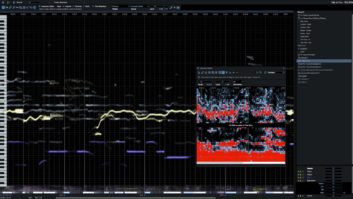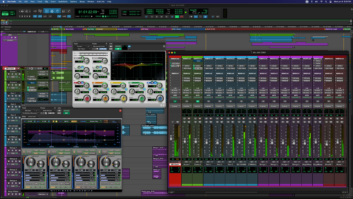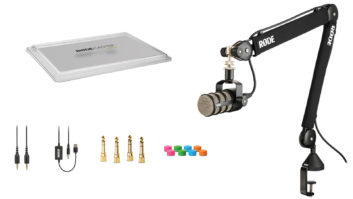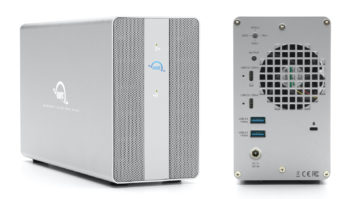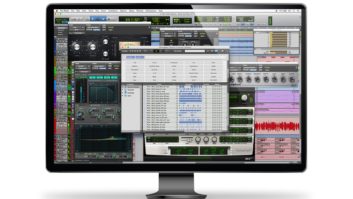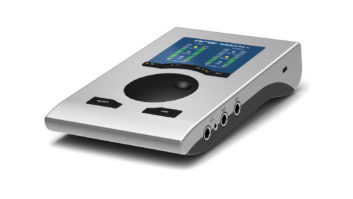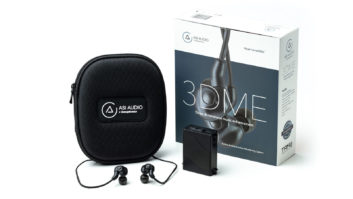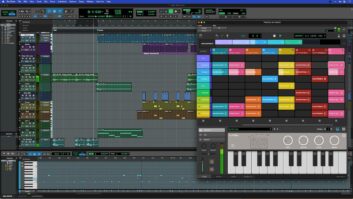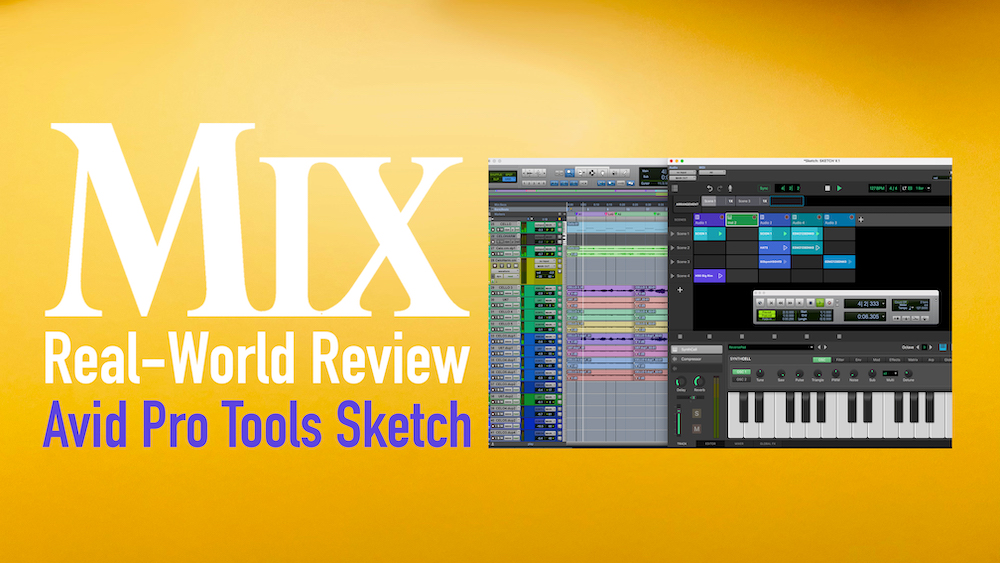
| MIX VERDICT: AVID PRO TOOLS SKETCH |
| THE TAKEAWAY: “No matter how you slice it, Sketch is a creative tool that I’m happy to have in my workshop. I can’t wait to see where it goes next.” |
| COMPANY: Avid • www.avid.com PRICE: Included in subscriptions and perpetual licenses, app, and Pro Tools Intro. PROS: • Can be used on its own or in Pro Tools timeline. • Included content is excellent. • Seamlessly navigates the gaps between linear and nonlinear. CONS: • Takes a little getting used to conceptually. |
Sketch is a nonlinear creative workspace for Pro Tools. It’s a new window in all versions of the DAW that works both independently and interactively. Let’s take a look at what Sketch is and how it works in a real-world composing/creating session.
I “grew up” composing in Pro Tools, so I’m used to working in a “linear” fashion—fundamentally, from left to right. A nonlinear style of production forces a different way of thinking, as users of programs such as Ableton Live are aware. It’s not only working left to right, but up and down in “blocks.” Sketch is built on the use of clips and scenes, combining loops, sound design and instruments to spur your creativity. It’s drag, drop, swap, switch and create. It can be used on its own, or in the Pro Tools linear window timeline.
Sketch comes with more than a Gigabyte of loops, nine effects processors, and 30-plus PlayCell instruments with over 100 SynthCell presets. Instrument tracks default to PlayCell, but you can easily switch to SynthCell as needed. Sketch can be opened in either Pro Tools, a free iPad app or on its own, allowing you to move between them in either direction.
It features 16 tracks and comes with a variety of built-in instruments and effects. The Sketch workspace is included in Pro Tools 2023.9 on active subscriptions or perpetual licenses, the app, and in the free Pro Tools Intro.
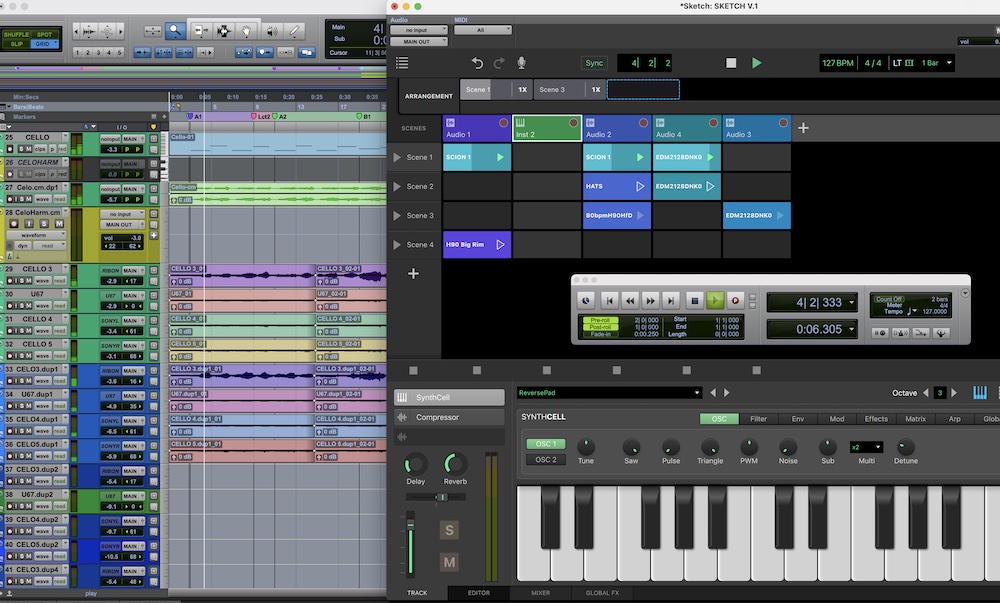
THE SOUNDS
The content included with Sketch is excellent. PlayCell and SythCell include a useful set of instruments and presets, everything from pianos, choirs and drum kits, to synth arpeggios, leads and pads. Then add in the built-in reverb and delay. It’s a great place to start an idea and get it under way.
Other gems can be found in the Sonic Drop loop and sample collections, which come with your Pro Tools subscription and are downloaded from the Sonic Drop tab in your Avid Link. The packages include such goodies as Pummeled Piano, Ultra 808s, Elektron Syntak Beats, Noise Engineering Modular Motifs, and my current favorite, Eventide H90 Drums. Created by Matt Lange, head of Audio Content at Avid (see sidebar), users will get a new Sonic Drop sample pack each month, so you never know what’s coming next. Note that you can also use any of your own loops/ samples with Sketch, so it’s quite open-ended.
GOING WITH THE FLOW
All the actual work is done in the Clip Launcher, where the clips, or cells, are dragged and dropped, or recorded. The MIDI tracks are either loops or instruments, and you can record audio in there, as well. The columns are either audio tracks or instrument tracks— the waveform icon indicates an audio track and the keyboard icon is the MIDI track. Clips that play together are called Scenes, and you can order these in any manner to create an Arrangement, which plays back linearly and can be exported as a .wav file or just dropped directly into Pro Tools.
The Sketch clips, scenes and even entire arrangements can also be dragged and dropped into the Pro Tools timeline, making for an easy workflow no matter how you go about building a track. By hitting the Sync button on the Sketch window, it will automatically lock to your Pro Tools session. Boom, it’s that easy.
The four main tabs at the bottom, Track, Editor, Mixer and Global FX, let you control the functionality of the tracks. Note that Sketch files (.ptsketch) are different from Pro Tools Session files (.ptx), allowing Sketch documents to be saved to the cloud or emailed. These files are all self-contained, unlike a Pro Tools session.
LINEAR MEETS NONLINEAR
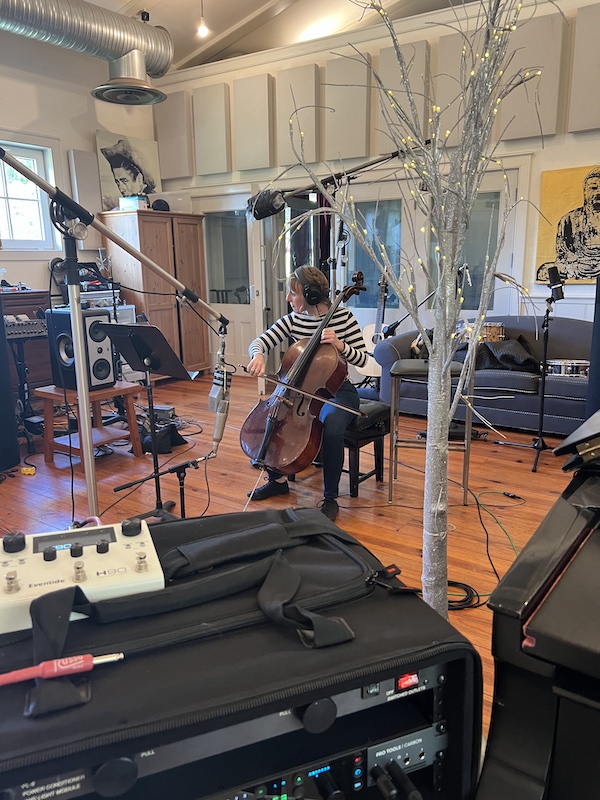
It didn’t take long to get a grasp on Sketch. I got started by simply watching some of the online tutorials and then jumping in to play around. Once I understood the flow and concept of dragging Clips into Scenes, then creating an Arrangement of them, then dragging them directly into Pro Tools, I was underway. While it does take a little getting used to, the more time I spent with Sketch (like anything else), the better I felt and the easier it was to develop new ideas in new ways. The included loops are fantastic starting points, but I also made good use of my own libraries.
In a real-world scenario, I went to cocomposer/ drummer Dave Koch’s studio, called up Sketch from scratch, and wrote a piece with him for an upcoming TV series. We started in Sketch only, dragging a few sound design, impact-type loops into a Scene to get the vibe. Then we added ticking clocks and Piano Impact hits for tension and created an Arrangement. When experimenting with different tempos, I found it convenient and cool that all the loops automatically stretched—keeping the creative flow moving. Next, the Arrangement was dragged into a Pro Tools session, where we laid down string basics, synths and synthesizer pads with a Moog. From there, I took the session back to my studio (now a separate Sketch file and Pro Tools file of the same name), where I exported the string lines from Pro Tools to Sibelius for some cello overdubs.
Warm Audio WA-1B – A Mix Real-World Review
So it was off to Clubhouse Studios in Rhinebeck, N.Y., where cellist Anneke Schaul-Yoder laid down a variety of string passes on her Jacques Boquay instrument (made in Paris in 1713!).
Back at my studio, I opened Sketch again and, as a test, added a few additional piano notes and pads. Then, the final track was mixed in Pro Tools and sent off to the show. Just the fact that we could start a track in Sketch, export it to Pro Tools, export the MIDI to Sibelius, cut string tracks with it, and then output a final mix—all in one ecosystem—proved a massive timesaver.
OVERALL IMPRESSIONS
Note that this iteration of Sketch is merely the beginning. Avid states clearly that its capabilities, features, instruments and content will evolve with each version. I know the developers have been taking user feedback into consideration from the beginning, which will make it quite a powerful program in time.
I dig Sketch. Not only does it open up new ways of working, it seamlessly navigates the gaps between linear and nonlinear. It also smoothly integrates into and out of Pro Tools. I think of it as a hybrid music composition and inspiration system. In my case, I turn to it as an inspiring way to start TV cues, and also as a quick means of dropping a wide range of samples into a track. I found myself using much more of the Scenes feature, dropping them into Pro Tools and then creating my Arrangements in the Edit window. No matter how you slice it, Sketch is a creative tool that I’m happy to have in my workshop. I can’t wait to see where it goes next.
